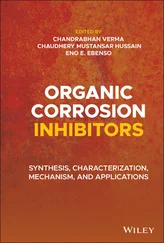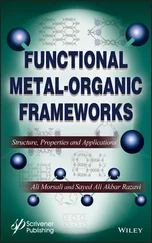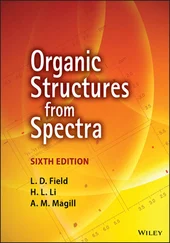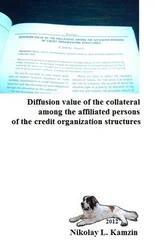51 Figure 7.5 The example of modified MOF with chiral species through post-chiral modification.
52 Figure 7.6 Asymmetry unit in Zn-DPYI crystal structure (left). Crystal structure of Zn-DPYI (right).
53 Figure 7.7 The preparation steps of one kind of chiral Zn-MOF through post-synthesis modification by using two chiral compounds with the opposite chirality.
54 Figure 8.1 A plot based on the number of published articles about the defect of MOFs.
55 Figure 8.2 MOF with interpenetration.
56 Figure 8.3 Different cases of MOFs with various mixed linkers. (a) The parent MOF, (b) the different mixed linker structurally, and (c and d) the large and truncated mixed organic linkers.
57 Figure 8.4 MIL to different forms: (a) without any defect, (b) dangling organic linker, and (c) linker vacancy. The orange polyhedral: cationic units. C atom: black. O atom: blue.
58 Figure 8.5 Defective UiO-66(Zr)-(OH)2 framework for CO2 capture.
59 Figure 9.1 (a) H4PANAD structure. (b) HHU-1 network with varying size pores (two brown atoms illustrate one ellipsoid-like pore). For clarity, H atoms have not been shown.
60 Figure 9.2 Heterogeneous pores due to missing node or ligand.
61 Figure 9.3 An example of MOF-based porous carbon (NHOPC) with multiporosity synthesis as a supercapacitor.
62 Figure 9.4 Examples of Cr-MILs as mesoMOFs with two types of mesocages.
63 Figure 10.1 Schematic representation of bio-MOF composite.
64 Figure 10.2 Heteroepitaxially grown hybrid IRMOF-3@1 and structures of IRMOF-1 and IRMOF-3 (zinc: purple; nitrogen: blue; oxygen: red; carbon: gray. Hydrogen atoms have not been shown).
65 Figure 10.3 Optical micrographs: (a) hybrid IRMOF-3@1, (b) IRMOF-1@3. (IRMOF-1: transparent; IRMOF-3: brownish).
66 Figure 10.4 Isostructural Eu/Tb mixed MOFs with different triplet energy levels.
1 Table 3.1 Examples of mixed ligands metal-organic frameworks.
2 Table 3.2 Determination of catalytic conditions for Biginelli reaction.
3 Table 5.1 Optimization of the carboxylation of phenylacetylene.
4 Table 5.2 Carboxylation of terminal alkynes with CO2.
5 Table 5.3 Crystallographic data and refinement parameters of the considered MOF.
6 Table 5.4 Various applications of mixed-metal MOFs.
7 Table 6.1 Diethylzinc additions to aromatic aldehydes.
8 Table 6.2 Alkynylzinc additions to aromatic aldehydes (similar conditions with Table 6.1).
9 Table 7.1 Asymmetric dihydroxylation of aryl olefins.
10 Table 7.2 Aldol reactions catalyzed by Zn-MOF1.
11 Table 7.3 Aldol reactions by using Zn-MOF1 and Zn-MOF2.
12 Table 7.4 Control reactions for asymmetric epoxidation of styrene.
13 Table 7.5 Asymmetric epoxidation of several olefins and methanolysis of styrene oxide.
14 Table 8.1 Some of the published papers about defects in metal-organic frameworks.
15 Table 8.2 Some of defective MOF-based materials.
16 Table 10.1 Carbon dioxide cycloaddition with various epoxides by using CZ-BDO.
1 Scheme 2.1The conversion of an achiral MOF to a chiral MOF by using an achiral organic linker.
2 Scheme 3.1 Structure of the used ligands.
3 Scheme 3.2 Structures of the used organic dyes.
4 Scheme 3.3 Biginelli reaction by using ADES-1.
5 Scheme 6.1 Synthesis conditions to produce chiral metal-camphorate coordination polymers 1–5.
6 Scheme 6.2 Coordination modes of D-Cam and D-HCam in polymeric structures 1–5.
7 Scheme 7.1 Synthesis method of chiral [MIL-101(Cr)-tart].
8 Scheme 7.2 Interactions in the preparation of [MIL-101(Cr)-tart].
9 Scheme 7.3 The preparation steps of post-chiral modification NU-1000 by SALI method and then Mo-catalyst immobilization on chiral species.
10 Scheme 10.1 Suggested mechanism of carbon dioxide cycloaddition with epoxide by bimetal mixed MOFs.
The study of metal-organic frameworks (MOFs) as porous crystalline materials has risen rapidly over recent years due to their unique properties and various potential applications. Until now, thousands of MOFs have been prepared with wonderful new designs and further precision in the synthesis methods.
As known, MOFs chemistry is started with the main two components: inorganic and organic units. But, it is of interest to know that most of them have homogeneous structure with having one of each kind of component. Recently, MOFs with heterogeneous structures have been attracting strong attention due to their interesting structure and features. These kinds of materials in their body have more kinds of components that lead to structural complexities. The understanding of effective agents in the production of MOFs with heterogeneous structures is another key and important concept that is not easy. Given that how these kinds of heterogeneous porous MOFs are constructed is attractive, so, in this book, we focus on advances in research on MOFs with heterogeneous structures covering mixed components (metals/ligands), multi-heterotopic linkers, defect, heterogeneous pores, mixed MOFs, and, most importantly, chiral MOFs along with some examples. These different cases lead to diversity of parent architectures, and finally, the complexity and heterogeneity appear in them. Many reports have been presented about different kinds of MOFs but some of them are very complex therefore the attempt to their understanding should be increased. This book can help further understanding of these kinds of MOFs.
Ali Morsali and Kayhaneh Berijani Department of Chemistry, Tarbiat Modares UniversityTehran, Islamic Republic of Iran July 2021
| 1,3-BDC |
(1,3)-Benzene dicarboxylate |
| MUF |
Massey University Framework |
| BTB |
Benzene-1,3,5-tribenzoate |
| BTC |
Benzene-1,3,5-tricarboxylate |
| 1,4-BDC |
1,4-benzenedicarboxylate |
| BPDC |
4,4′-biphenyldicarboxylate |
| Bz-IM |
Benzimidazole |
| OHC-IM |
Carboxaldehyde-2-imidazole |
| D-Cam |
D-camphanic acid |
| bpdc |
4,4′-Diphenyl dicarboxylate |
| D-POST-1 |
[Zn 3(μ 3-O)(1-H) 6].2H 3O.12H 2O |
| MM′-MOF |
Mixed-metals MOF |
| MBBs |
Molecular building blocks |
| MTV-MOF |
Multivariate metal−organic framework |
| 2-MeIM |
2-Methylimidazole |
| NLO |
Non-linear optics |
| PL-MOFs |
Pillared layer metal-organic frameworks |
| PSM |
Post-synthetic modification |
| SBUs |
Secondary building units |
| SBBs |
Supramolecular building blocks |
| SBLs |
Supramolecular building layers |
| TBUs |
Tertiary building units |
| F 5CPP |
5,10,15-Tris(p-carboxyphenyl)-20 (pentafluorophenyl) porphyrin |
| ZABUs |
Zinc-adeninate octahedral building units |
| ZJU |
Zheijang University |
| H4TBAPy |
1,3,6,8-Tetrakis(p-benzoic acid)pyrene |
| Zn-TCPP |
[5,10,15,20-Tetrakis(4-carboxy-phenyl) porphyrinato]-Zn(II) |
| ICP-OES |
Inductively coupled plasma-optical emission spectroscopy |
| Zn-MI |
[Zn 4O(3-Methyl-5-isopropyl-4-carboxypyrazolate) 3] n |
| Zn-DM |
[Zn 4O(3,5-Dimethyl-4-carboxypyrazolate) 3] n |
| SAM |
Self-assembled monolayer |
| Dcam |
(1R,3S)-(+)-Camphoric acid |
| dabco |
Diazabicyclo(2.2.2)octane) |
| ndc |
Naphthalene dicarboxylate |
| dabco |
1,4-Diazabicyclo[2.2.2]octane) |
| bipy |
Bipyridine |
| bpe |
Bis(4-pyridyl)-ethylene |
| dpndi |
N,N’-Di(4-pyridyl)-1,4,5,8-naphthalene tetracarboxydiimide |
| adc |
Anthracene dicarboxylate |
| NDC |
2,6-Naphthalenedicarboxylate |
| RT |
Room temperature |
| DHPMs |
3,4-dihydropyrimidin-2(1H)-ones |
| FTO |
Fluorine-doped tin oxide |
Читать дальше












